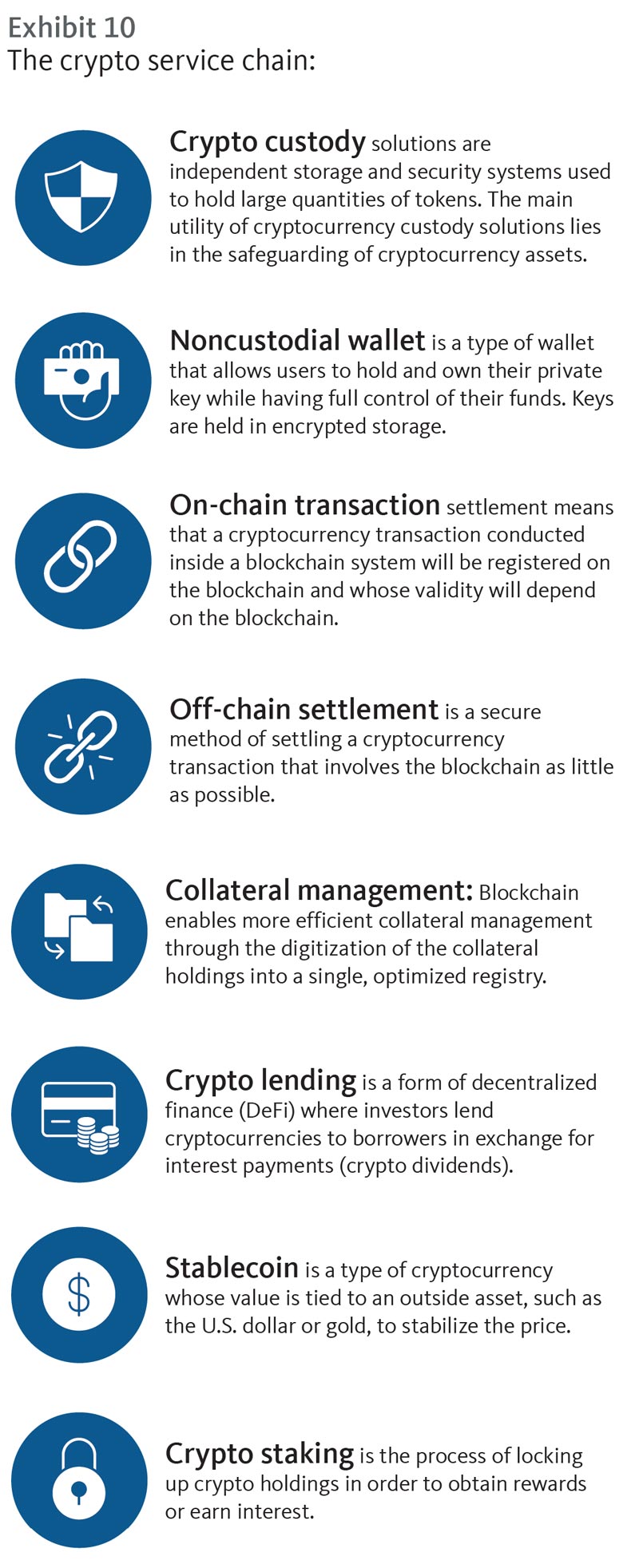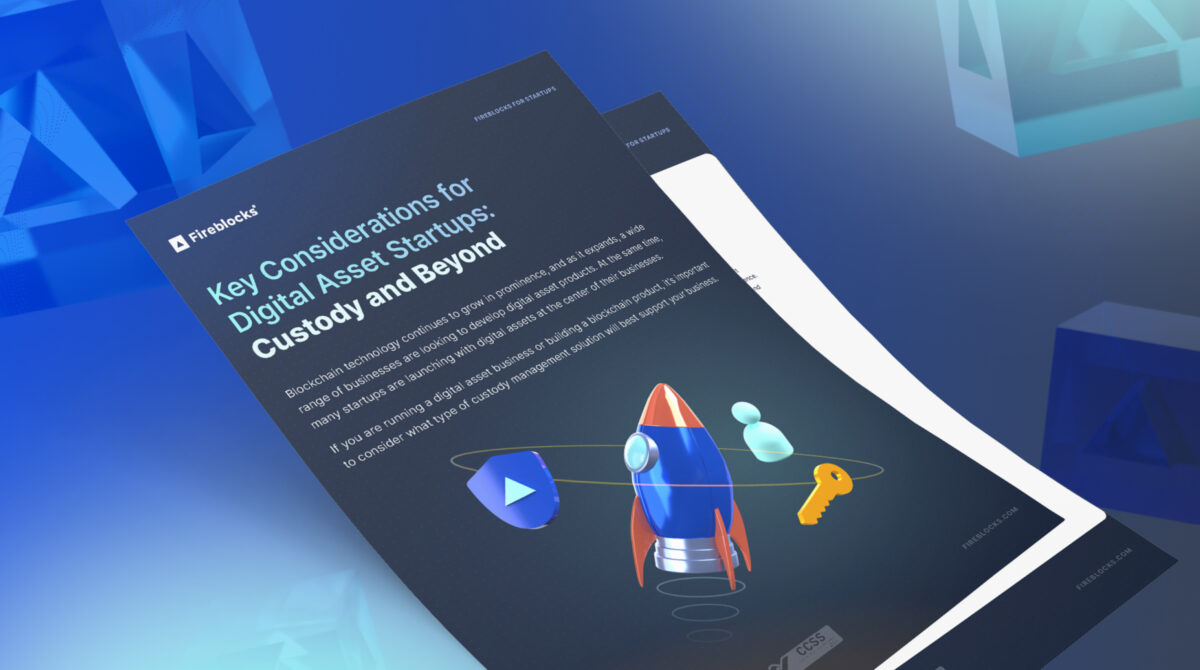Introduction
Definition of Digital Asset Custody Solutions
In today’s technologically-driven world, the management of digital assets has become increasingly critical. Digital asset custody solutions refer to services designed to securely store, manage, and protect various digital assets, including cryptocurrencies, tokens, and other digital representations of value.
These solutions typically involve sophisticated technologies and processes, ensuring that assets are not only safe from theft or loss but are also readily accessible to the rightful owners. Digital asset custody services may be provided by specialized firms, financial institutions, or advanced security infrastructure, focusing on safeguarding these assets while allowing clients to manage their investment strategies effectively.
Significance of Secure Digital Asset Storage
The significance of secure digital asset storage cannot be overstated. As more individuals and institutions venture into the realm of digital currencies and assets, the threats from cyberattacks and hacking attempts grow exponentially. Protecting these assets requires a deep understanding of both technology and security practices.
Consider the following key reasons why secure digital asset storage is crucial:
- Protection Against Theft: Just as physical assets can be stolen, digital assets are vulnerable to cyber threats. A secure custody solution offers robust security measures to protect against hacking.
- Regulatory Compliance: As governments and regulatory bodies evolve their stance on digital currencies, having a compliant method of storage ensures that users are abiding by the law, minimizing legal repercussions.
- Ease of Access and Management: Secure digital custody solutions often come with user-friendly interfaces that allow clients to manage and monitor their assets easily. This convenience can be a game-changer for asset owners.
- Asset Recovery: In the unfortunate event of a lost password or access credentials, secure custody solutions can provide mechanisms to recover access to assets, something that is often impossible with standard wallets.
- Investment Assurance: Investors feel more secure knowing their assets are safeguarded by companies specializing in this field. The peace of mind that accompanies professional custody can encourage more significant investment in digital products.
As technology and financial landscapes shift, understanding the importance of digital asset custody solutions is essential for anyone looking to navigate this dynamic market effectively. With this foundational knowledge, we can explore the evolution, features, and future potential of these essential services.

Evolution of Digital Asset Custody
Traditional Custody Methods
The evolution of digital asset custody can be traced back to traditional asset management practices. Historically, custodians were responsible for the safekeeping of physical assets, such as stocks, bonds, and precious metals. These custodians, typically banks or specialized firms, ensured that valuable items were stored in secure locations, managed on behalf of their clients, and accurately accounted for over time.
For instance, think about the vaults used by banks to store gold and other valuables. These facilities are fortified with advanced security systems, ensuring maximum protection. Similarly, traditional custodians offered benefits such as:
- Reliability: Established custodians have long-standing reputations, built on trust and proven systems.
- Accountability: They provided a robust framework for reporting and auditing, ensuring transparency for the asset owners.
- Insurance: Many custodians insured their holdings, providing additional peace of mind concerning potential losses.
However, the transition to digital assets demanded a new approach. The limitations of these traditional methods—particularly their inability to store non-physical assets securely—became evident as the digital asset market began to flourish.
Rise of Digital Asset Custody Solutions
As cryptocurrencies gained traction in the early 2010s, the need for specialized digital asset custody solutions emerged. Investors and institutions sought credible ways to secure their virtual currencies in light of increasing cyber threats and market volatility.
Enter digital asset custody solutions, designed to address these new challenges. These advancements presented an innovative approach to safeguard digital assets, while also catering to the unique characteristics of this evolving market. Key attributes of these solutions include:
- Advanced Security Protocols: Employing cutting-edge technology, such as multi-signature authentication and cryptographic techniques, custodians enhance security beyond traditional methods.
- Cold Storage Options: Many custody providers utilize cold storage to keep assets offline, drastically lowering the risk of cyber theft.
- Enhanced Liquidity: By embracing evolving technologies, such as trading access through APIs, digital custody solutions enable easier and quicker transactions.
Personal experiences highlight this shift, as institutional investors who once hesitated to embrace cryptocurrencies are now eager to utilize these custodians, driven by the desire for safety and compliance.
As the digital landscape continues to change, the evolution of custody solutions signifies a shift toward a more resilient approach—one that aligns with the demands of modern finance. Understanding this transition sets the stage for deeper insight into the key features of modern custody solutions and the regulatory complexities they encounter.

Key Features of Modern Custody Solutions
As the digital asset landscape evolves, modern custody solutions have developed a range of features aimed at enhancing security, accessibility, and compliance. These key features are essential for building trust and safeguarding investments in an ever-changing environment. Let’s dive into three of the most significant attributes: multi-signature authentication, cold storage mechanisms, and insurance coverage for assets.
Multi-Signature Authentication
One of the cornerstones of modern digital asset custody solutions is the implementation of multi-signature authentication (often abbreviated as multi-sig). This method requires multiple private keys to authorize a transaction, significantly increasing security.
- Enhanced Security: Unlike traditional wallets that can be accessed with a single password, multi-signature wallets require several keys to validate a transaction. This prevents a single point of failure.
- Risk Mitigation: Imagine a scenario where you accidentally lose access to your wallet. With multi-signature authentication, the risk is mitigated. For instance, if a business has a wallet requiring three keys for access—one held by the owner, one by the accountant, and one by a third-party custodian—lost access to one key won’t compromise the entire wallet.
- Collaborative Control: This feature encourages collaborative investment strategies, where multiple parties must agree before any asset transaction can be conducted.
Cold Storage Mechanisms
As digital assets are particularly susceptible to cyber threats, cold storage mechanisms play a vital role in securing these assets. Cold storage refers to keeping cryptocurrencies offline, away from the reach of hackers.
- Physical Security: Cold storage typically involves hardware wallets or secure physical environments. For example, a company might store private keys on a USB drive locked in a safe.
- The “Air Gap”: This means that cold storage solutions are completely disconnected from the internet, creating a significant barrier against cyber intrusions—like having a mountain fortress in a digital world.
- Best Practices: Many custodians utilize a combination of cold storage and multi-signature authentication to enhance the overall security posture further.
Insurance Coverage for Assets
In a landscape marked by uncertainty, insurance coverage adds another layer of reassurance for asset holders. Insurance for digital assets provides a safety net against losses due to theft, hacking, or technical failures.
- Peace of Mind: Knowing assets are insured can encourage individuals and institutions to invest more confidently in digital currencies.
- Institutional Trust: Banks and large organizations are more likely to engage in cryptocurrency movements when they know adequate insurance coverage is in place.
- Extent of Coverage: Coverage can vary by provider, so it’s essential for custodians to clearly outline the terms and conditions of insurance policies.
In summary, as technology advances, so do the features of modern custody solutions. The importance of multi-signature authentication, cold storage mechanisms, and insurance coverage cannot be overstated. They pave the way for increased security, trust, and a more robust digital asset ecosystem. With these features in mind, it becomes evident why digital asset custody solutions are becoming indispensable for investors looking to navigate the complexities of modern finance.

Regulatory Landscape in Digital Asset Custody
As the digital asset space continues to grow, so does the importance of navigating the regulatory landscape that surrounds it. Understanding these regulations is crucial for both custodians and asset holders, as they dictate how digital assets are managed, stored, and traded. In this section, we’ll explore the global regulatory frameworks shaping digital asset custody, as well as the compliance challenges and potential solutions that arise from these complexities.
Global Regulatory Frameworks
Around the world, different jurisdictions have begun establishing regulations to govern the custody of digital assets. This is a dynamic space, where several countries take varied approaches:
- United States: In the U.S., the regulatory landscape is fragmented, with agencies like the SEC (Securities and Exchange Commission) and CFTC (Commodity Futures Trading Commission) playing significant roles in overseeing digital assets. Cryptocurrency custodians must navigate both federal and state regulations, which can be quite challenging.
- European Union: The EU is moving towards more unified regulations with the proposed Markets in Crypto-Assets (MiCA) regulation. This legislation aims to provide a clearer framework for digital asset custody and the responsibilities of custodians.
- Asia: Countries like Singapore and Japan have established comprehensive regulatory frameworks that encourage innovation while ensuring consumer protection. Singapore’s Monetary Authority has created licensing requirements for custodians, setting a standard for accountability.
These global variations underline the need for custodians to stay informed about different regulatory requirements and adapt their practices accordingly.
Compliance Challenges and Solutions
With the regulatory environment constantly evolving, custodians face several compliance challenges:
- Rapidly Changing Regulations: Custodians often struggle to keep up with new rules and guidelines. This shift can create significant operational burdens.
- Jurisdictional Variability: Different countries have unique requirements, which complicates the ability of global custodians to maintain uniform standards.
- Consumer Protection: Ensuring that custodians are compliant with local laws, particularly around data protection and consumer rights, can pose logistical hurdles.
To address these challenges, many custodians are turning to innovative solutions:
- RegTech Partnerships: Collaboration with regulatory technology firms can help custodians automate compliance processes, reducing the strain of navigating complex regulations.
- Training and Development: Investing in staff training programs to ensure that compliance teams are updated on the latest regulatory changes is critical for maintaining compliance.
- Legal Consultation: Engaging with legal experts who specialize in digital asset regulations can provide custodians with tailored guidance and support in navigating this complex landscape.
As digital asset custody continues to mature, understanding these regulatory frameworks and addressing compliance challenges become crucial for firms looking to build credibility and trust. A proactive approach ensures custodians can foster investor confidence while navigating the intricacies of digital asset management in compliance with evolving regulations.
Advantages and Challenges in Digital Asset Custody
As we delve deeper into the world of digital asset custody, it’s essential to understand the various advantages it offers and the challenges that come with it. For many investors, choosing a secure custody solution is a crucial decision, and recognizing both the benefits and potential concerns can provide valuable insight into making informed choices.
Benefits of Secure Custody Solutions
The use of secure custody solutions has become more than just a trend; it is a necessity for anyone dealing with digital assets. Here are some of the key benefits that come with these sophisticated solutions:
- Enhanced Security: Secure custody solutions employ advanced security features such as encryption, multi-signature authentication, and cold storage, making it much harder for hackers to access the assets. For instance, companies like BitGo have set the standard by offering secure vaults that protect digital currencies from theft.
- Operational Efficiency: Custodians streamline the management of digital assets, allowing investors to focus on strategic decisions rather than day-to-day asset management. This efficiency can be a game-changer for institutions managing large portfolios or for individuals looking to simplify their investment strategies.
- Regulatory Compliance: Secure custody solutions are typically designed to comply with the latest regulations. This ensures that clients do not face legal repercussions, which can be especially critical for institutional investors who need to adhere to strict regulatory guidelines.
- Peace of Mind: Knowing that assets are in a secure environment creates a sense of confidence for investors. An anecdote shared by a hedge fund manager illustrates this point; after switching to a regulated custodian, their overall investment strategy became more aggressive, as they felt secure about their asset protection.
Addressing Security Risks and Concerns
While secure custody solutions have numerous benefits, they are not without challenges. Acknowledging these security risks is crucial for maintaining effective asset management:
- Evolving Threat Landscape: The digital asset environment is continuously evolving, which means custodians must adapt to new threats frequently. Cybercriminals are always finding innovative ways to exploit vulnerabilities, making ongoing vigilance essential.
- Single Point of Failure: While multi-signature wallets mitigate this risk, some custodial models still create single points of failure. For instance, if a custodian suddenly goes bankrupt or experiences a significant security breach, it puts all assets at risk.
- Lack of Standardization: The absence of standardized practices can lead to inconsistencies in how assets are secured. Investors may find it challenging to evaluate the security measures taken by different custodians.
To address these concerns, custodians and investors alike should engage in proactive measures:
- Regular Security Audits: Custodians can commit to regular audits and stress-test their systems to identify potential weaknesses before they become a problem.
- Transparency and Education: By educating clients about their security measures, custodians can help build trust and provide customers with the knowledge to feel empowered in their choice of custody solutions.
In conclusion, while digital asset custody solutions offer significant advantages in terms of security and efficiency, understanding the challenges inherent in this space is essential for investors. By weighing these factors carefully, custodian firms can foster a more secure and trusting environment for managing digital assets.
Emerging Trends in Digital Asset Custody
As the digital asset landscape continues to evolve, new trends are shaping the future of custody solutions. These trends reflect a growing demand for security, efficiency, and user-friendly experiences among investors. Among the most significant trends are the rise of decentralized custody platforms and the integration of artificial intelligence (AI) into custody solutions. Let’s explore how these emerging trends are influencing the industry.
Decentralized Custody Platforms
Decentralization has been a hot topic in the cryptocurrency community since its inception, and it’s now making strides in custody solutions. Decentralized custody platforms offer a new approach to asset management by removing the reliance on centralized institutions. Here’s how this trend is taking shape:
- Enhanced Control: Decentralized custody allows users to have full control over their private keys, offering a sense of empowerment that centralized solutions may lack. Users can manage their assets directly from their wallets without needing to trust a third party.
- Reduced Counterparty Risk: By eliminating the need for a central custodian, users can minimize the risks associated with central points of failure, such as hacks or bankruptcies. An example of this can be found in platforms like Unchained Capital, which offer multi-signature wallets where individuals collaborate on secure transactions.
- Community-Based Security: Many decentralized platforms utilize community governance, where users participate in the decision-making process for software updates and improvements. This involvement can create a sense of ownership and collaboration among the users.
- Unconventional Models: New models of decentralized finance (DeFi) are being explored, allowing users to leverage their held assets for loans or yield generation, further enhancing the utility of their investments.
Integration of Artificial Intelligence
As industries worldwide increasingly adopt AI, the digital asset custody space is no exception. AI technologies significantly enhance security, efficiency, and customer experience. Here’s how:
- Fraud Detection: AI can analyze vast amounts of data to identify unusual patterns and behaviors that may indicate fraudulent activity. This proactive approach to fraud detection helps custodians catch potential threats before they escalate.
- Risk Assessment: Custodians can harness AI’s predictive capabilities to assess market risks and compliance requirements. For example, an AI-based system could analyze historical transaction data to flag suspicious activity as regulatory scrutiny increases.
- Enhanced User Experience: AI-driven chatbots and customer service tools enable users to receive instant assistance, making it easier for them to access information about their assets. This can significantly improve client satisfaction.
- Portfolio Management: AI can aid in portfolio optimization by analyzing market trends and predicting asset performance, which helps custodians advise clients in making informed investment decisions.
As these two trends—decentralized custody platforms and the integration of AI—continue to gain momentum, they promise to reshape the landscape of digital asset custody. By addressing existing challenges and enhancing security and user control, they will pave the way for a more resilient and inclusive future for digital asset management. Investors and custodians alike should keep a close eye on these developments to stay ahead in the rapidly changing industry.

Future Prospects and Innovations
As we look ahead at the ever-evolving landscape of digital asset custody, several predictions and technological advancements are poised to shape the future. With innovation driving the industry forward, it’s essential for investors, custodians, and stakeholders to understand the trends that may define this space in the coming years. Let’s explore some predictions for the future of custody solutions and the impact of technology advancements.
Predictions for the Future of Custody Solutions
- Increased Institutional Adoption: As institutional investors become more comfortable with digital assets, we can expect a surge in the adoption of custody solutions tailored specifically for them. Major banks, hedge funds, and family offices are beginning to participate in the crypto space, necessitating robust custodial services designed to meet their compliance and security needs.
- Standardization of Practices: As the regulatory landscape matures, it is likely that we’ll see a move towards industry-wide standards for custody solutions. This would facilitate transparency and accountability, helping investors make informed decisions when selecting custodians.
- Focus on User Experience: With the continued growth of retail investors in the digital asset space, custodians will need to prioritize user experience. Intuitive interfaces, educational resources, and customer support will become essential features to attract and retain clients.
- Integration of Cross-Asset Custody: Future custody solutions are expected to accommodate a broader range of assets—beyond cryptocurrencies—to include tokenized real estate, art, and other emerging digital instruments. This could simplify the management of diverse portfolios under a single umbrella.
- Greater Emphasis on Security: With cyber threats becoming increasingly sophisticated, custodians will invest heavily in advanced security measures such as biometric authentication, distributed ledger technology, and artificial intelligence-driven monitoring to protect clients’ assets.
Impact of Technology Advancements
The integration of technology in digital asset custody is revolutionizing how assets are managed and protected. Here are a few ways technology advancements are expected to impact the industry:
- Blockchain Transparency: By leveraging blockchain technology, custodians can provide clients with a greater level of transparency regarding asset ownership and transaction history. This transparency can enhance trust and credibility.
- Smart Contracts: The use of smart contracts can automate various processes in custody, such as asset transfers and compliance checks, making transactions more efficient and less prone to errors.
- Data Analytics and Insights: Advanced analytics and big data will allow custodians to better understand market trends and generate actionable insights for clients. This will enable custodians to offer personalized investment advice based on client profiles and preferences.
As these trends and technological advancements unfold, they promise to create a more secure, efficient, and user-friendly environment for digital asset custody. For those engaged in this space, understanding and adapting to these changes will be key to capitalizing on opportunities in the dynamic world of digital assets. The future looks bright, and staying ahead of the curve will only benefit those willing to embrace innovation and evolution in this exciting sector.

Conclusion
As we reflect on the evolution of digital asset custody and its current landscape, it’s clear that this industry is experiencing a significant transformation. From the challenges posed by evolving regulations to the innovations introduced by technology, digital asset custody is not only adapting to the present but also preparing for an exciting future. Let’s recap the key points discussed and explore the vision for what lies ahead.
Recap of Key Points
Throughout this article, we examined several important aspects of digital asset custody, highlighting both its advantages and challenges:
- Definition and Significance: Digital asset custody solutions provide a secure way to store and manage cryptocurrencies and other digital assets. They ensure compliance with regulations while enhancing overall investment security.
- Evolution and Key Features: We traced the evolution of custody from traditional methods to modern solutions, emphasizing features like multi-signature authentication, cold storage mechanisms, and insurance coverage that enhance security.
- Regulatory Landscape: The importance of navigating global regulatory frameworks became apparent, along with the compliance challenges custodians face and the solutions they can implement to stay ahead.
- Emerging Trends: The rise of decentralized custody platforms and the integration of AI have started to reshape how digital assets are managed, promoting user empowerment and improving security.
- Future Prospects: Predictions indicate a growing institutional adoption and the standardization of practices, while technology advancements are expected to play a crucial role in enhancing transparency, efficiency, and overall client experience.
Vision for the Future of Digital Asset Custody
Looking ahead, the future of digital asset custody is both promising and dynamic. Organizations in this space will likely embrace further enhancements to security and usability, ensuring they can meet the demands of increasingly sophisticated investors.
- Innovation Collaboration: Custodians may begin to collaborate with fintech companies to leverage innovative technologies, creating integrated solutions that address security and user experience challenges.
- Increased Accessibility: The vision includes making secure custody solutions more accessible to everyday investors, democratizing access to digital asset investment opportunities.
- Growing Education: With the rapid evolution of the digital asset landscape, an increasing focus on education will empower investors to better understand their options and make informed decisions.
In conclusion, the path forward for digital asset custody is filled with potential. By staying ahead of trends, embracing innovations, and prioritizing security and compliance, custodians can build a resilient infrastructure that fosters trust and efficiency in this rapidly evolving domain. As we forge ahead, it is vital for stakeholders across the industry to remain adaptable and responsive to the changing needs of investors to thrive in the future of digital asset management.

